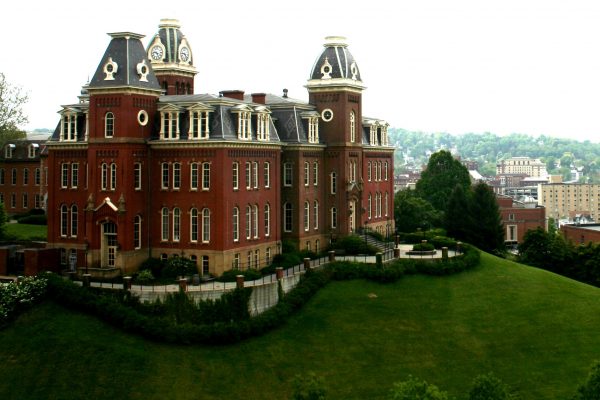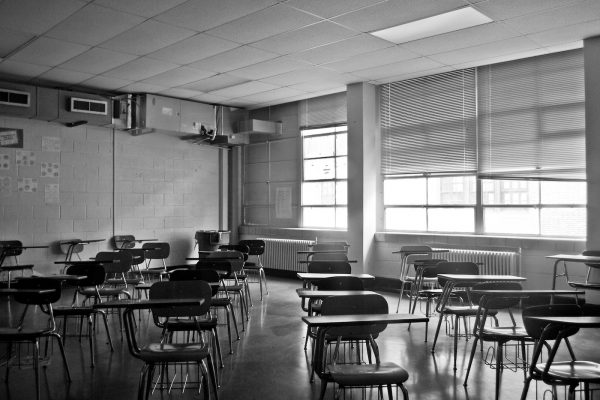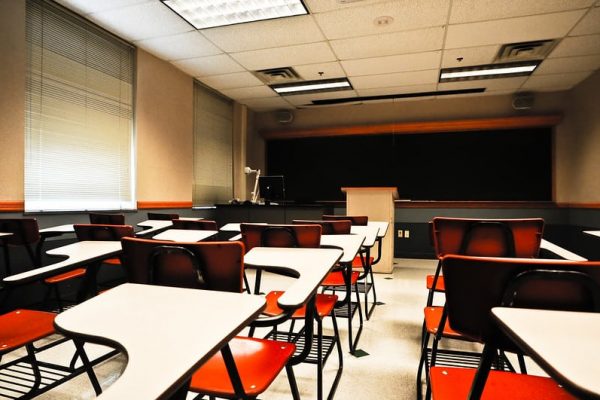The Case Against Education: Why the Education System is a Waste of Time and Money
Bryan Caplan
Princeton University Press, $29.95 (cloth)
“Galactically overrated.” That is how Bryan Caplan, author of the new book The Case Against Education, describes the value of schooling. Learning does not have to be practical or good for the soul, according to Caplan, but when it “is neither useful nor inspirational,” he says, “how can we call it anything but wasteful?”
If education in the United States is not entirely well, Caplan does an excellent job identifying some of its main symptoms: high drop-out rates, shocking levels of numeric, scientific, and cultural illiteracy as well as a strong preference for credentials over genuine learning. His diagnosis—that students are lazy, teachers are uninspiring, and schools focus way too much on “useless” academic subjects—is provocative, but less helpful. And his remedies—raise college tuition, get rid of subjects such as literature, history and foreign languages, and dramatically ramp up vocational education—are downright misguided.
Caplan does an excellent job identifying what is wrong with education in the United States, but his remedies are downright misguided.
Yet it is worth taking the book seriously because of its main target. Caplan is on a crusade against what he calls “human capital purism,” the rationale for education that has reigned supreme in the school reform world since the publication of A Nation at Risk, the Reagan administration’s 1983 report. Schooling, the conventional wisdom goes, builds human capital that will in turn make individuals and the nation more productive and wealthier. The purpose of education, then, is to prepare students with the requisite skills and knowledge to compete in a cut-throat, global economy.
Caplan vigorously disputes two positions held by human capital purists: first, that education always teaches “useful job skills”; and second, that these skills are the only reason education “pays off in the labor market.”
Consider, Caplan says, the following scenario: you are twenty-two years old and looking for a job. Would you rather have a college education without a college diploma or a college diploma without a college education? The human capital proponent would argue that “four years of training are vastly preferable to a page of paper.” The career counselor would point out that you need the diploma to even get a foot in the door.
•••
A self-described “libertarian economist,” Caplan is just as mesmerized by the goal of economic productivity as the sine qua non of human experience as most mainstream school reformers. He just doesn’t think schooling is the most efficient way to crank out skilled workers. Teens and young adults should be ushered into the workforce much sooner. If everyone had one fewer degree, Caplan claims, workforce productivity would remain steady and the economy would continue humming along. In contrast to the human capital boosters who view schooling as essential preparation for the workplace, Caplan concludes that most job skills are acquired on the job.
As Caplan amply demonstrates, human capital purism has no real explanatory or predictive power. It assumes, for example, that “all years of education are created equal.” In terms of earnings, however, diploma years are worth much more. Completing the senior year of college, for instance, pays more than twice as much as the other three years combined. Caplan is surely right that the labor market views “graduates and dropouts as separate species.”
The injunction to ‘stop throwing good money after bad’ is unpardonably perverse in the context of today’s remarkable ‘Red for Ed’ teacher strikes.
In a world governed by the laws of human capital, employers only care about “marketable skills” and all classes—from biology to art history—dispense them. In such a world, cutting classes would be rare, not ubiquitous. And university lecture halls would be filled with eager “guerilla” students, sitting in on classes to master the necessary content to get better jobs.
The main reason that people don’t “crash” classes, Caplan explains, is because most academic subjects do not teach valuable job skills. Caplan archly observes that if you apply your knowledge of history, literature, or philosophy on the job, then you must “have an odd job.”
The perception that school is so completely divorced from “real life” helps to explain why so many students find it so tedious, according to Caplan. Most students “just kill time” in school, Caplan says, citing a survey finding that two out of three high school students report they are bored in class every day.
Caplan’s assessment of our education system is unrelentingly bleak: “Students fail to learn most of what they are taught” and “adults forget most of what they learn.” The results from surveys that Caplan reports—such as the National Assessment of Adult Literacy—are indeed grim: just over half of U.S. adults can figure out that saving five cents per gallon on 140 gallons of oil equals $7.00. Only half can name the three branches of government. More than one in four believe that the “sun goes around the earth.” I think it is fair for Caplan to conclude that findings such as these point to a “staggering ignorance” on the part of the U.S. public. “After years of exposure, American adults know history, civics, science and foreign languages exist,” Caplan says. “That’s about it.”
If schools perform so badly, why do employers value education so highly? The answer, Caplan says, is signaling. Earn a degree and you send a strong signal to potential employers that you are an intelligent, industrious team-player. It is the “trifecta package”: brains, persistence, and strategic conformity. You are not a dullard, a quitter, or an iconoclast. You made it through.
To be clear, Caplan doesn’t think that the economic value of education is pure signaling. School does occasionally teach skills that can be applied on-the-job, namely literacy and numeracy. Caplan estimates that “education is about 80 percent signaling and 20 percent skill creation.” A degree will sometimes help you do a better job but it will always help you get a better job.
Caplan has done us a service by compelling us to pay attention to the distressing state of education, but his instrumental, bottom-line solutions of practical subject matter and financial austerity certainly won’t help.
On average, college graduates earn a whopping 73 percent more than high school graduates. While those of us who confuse correlation with causation conclude that college “causes” a 73 percent raise, Caplan points out that college graduates and high school graduates “differ in many ways besides the time they sat in classrooms.” More specifically, the typical college graduate is brighter and more industrious than the typical high school graduate. Controlling for what economists call “ability bias” by taking into account factors such as students’ GPAs, test scores and personality traits, Caplan estimates that a college degree really only boosts income by about 40 percent. The education wage premium may not be as lucrative as we thought.
Caplan suggests that we should think of education as a thief, constantly “stealing” credit from “preexisting” abilities such as intelligence and conscientiousness: it is not that doing well in school makes kids smarter but rather that smart kids do well in school. (And if you succeed in school, don’t thank your teachers, Caplan says—thank your parents, or more precisely, the genes they gave you.)
If the point is overstated and oblivious to class privilege, Caplan is still onto something here. Education alone can never account for all of students’ growth. We tend to ignore the hard work that students do themselves, not to mention the natural development that happens as children and adolescents grow up. It is like parents congratulating themselves for teaching their toddlers to walk and talk. At colleges with high graduation rates, we marvel at the remarkable changes in individual students over the course of four years, attributing their giant leaps forward in maturity and intellectual sophistication to the power of quality teaching and the liberal arts model.
Not all students, alas, will make us proud—a point that Caplan underscores. Approximately 40 percent of students who start college fail to reach the finish line within six years. (That amounts to roughly four million students every year.) Dividing students into four different categories based on their academic backgrounds and personality characteristics, Caplan estimates that the B.A. completion rate is around 65 percent for “excellent” students, 44 percent for “good” students, 12 percent for “fair” students, and about 5 percent for “poor” students.
For below-average students, attending college is like walking into a casino and sitting down at the slot machines to try your luck. Starting a degree program is a gamble, Caplan insists, and we should pay a lot closer attention to the odds. Ignoring statistical probabilities is unfair to those individual students who we prop up with “false hope”; it is also socially irresponsible, given the weak average returns on our educational investments. Most students who give college a shot, Caplan claims, will “die of old age before society recoups the initial outlay of time and money.”
Caplan’s answer to higher education’s “staggering cost” is to make it even more expensive. If you raise tuition and cut government subsidies such as grants, Caplan contends, students will be much more circumspect about weighing its costs and benefits. The lackluster student may decide it is simply too risky to enroll; the middling student who plans to enjoy a four-year party may conclude that no amount of beer-soaked tailgaters would justify the expense; and just about everybody will make fewer “foolish decisions,” such as majoring in anthropology.
•••
Reducing the number of students entering college would not resolve Caplan’s larger problem—the waste he sees in sluggish students, incompetent teachers, and pointless curriculums. For that, he proposes a complete separation of school and state. The more than 98,000 public elementary and secondary schools in the United States would no longer exist. Education, such as it was, would be funded by fees and private charity.
The book is predicated on the mistaken assumption that the quality of schooling is uniform across the country.
Caplan himself recognizes that such a radical vision doesn’t stand a chance of being implemented, and he doesn’t even offer the most rudimentary sketch of what untethering the government from the schooling enterprise would look like. Although he feels compelled to blow the whistle on behalf of the taxpayer (a.k.a., education’s “forgotten man”), he reports that fulfilling this “duty is painless because even the most intellectually compelling arguments won’t convert the typical voter to distasteful conclusions.”
Let’s concentrate, then, on Caplan’s more modest proposals: get rid of “useless” subjects and “reboot” vocational education.
Scrapping art, music, social studies, history, foreign languages and other “comically” irrelevant subjects, according to Caplan, would make school both more efficient and more appealing. Indeed, when children are old enough that they no longer “need babysitting,” Caplan recommends closing school doors “the minute useful learning is done.”
If it is not possible to remove “useless” subjects entirely, Caplan proposes making them optional. In addition, he suggests that standards for “fluff” classes such as music should be raised sky-high. “Unforgiving standards,” he says, “stealthily save time and money.” Music teachers should “cull” the bottom 80 percent of the class every year. “Students who repeatedly survive such weedings might even have a prayer of a future in music,” Caplan observes.
In a school designed by Caplan, the curriculum would be trimmed down to the bone. English classes would focus on “business and technical writing” instead of “literature and poetry,” and Caplan gamely suggests that the Bureau of Labor Statistics’ Occupational Outlook Handbook should be incorporated into the high school curriculum.
If Caplan thinks school is “boring” now, it is difficult to imagine how the new and improved, less is more Caplan curriculum will excite students. One can imagine a lesson devoted entirely to teaching kids how to fill out tax returns.
Following Caplan’s logic, we should celebrate the loss of “otherwordly” subjects such as art and music. “Force-feeding ideas and culture to recalcitrant youths often sparks resentment rather than appreciation,” he avers. For far too long, Caplan maintains, we have refused to recognize that the humanistic benefits of education are mostly “wishful thinking.”
In his ideal school, simplifying the curriculum helps reach struggling or seemingly apathetic students. But this model is built on a bankrupt theory of education. Educational psychologists have shown that rich academic content is vital for getting students, including below-average students, to improve their academic skills. Schools that remove the flesh and blood from the curriculum will cut off circulation to education’s beating heart: curiosity.
For below-average students, attending college is like walking into a casino and sitting down at the slot machines to try your luck.
Caplan’s plan effectively denies the possibility of two key features of any worthwhile education: discovery and seduction. He seems to imagine that students arrive in school like calculators, their computing power hard-wired and all of their preferences pre-set. Were educators to embrace Caplan’s philosophy of education that “most humans resent mental effort” and that students must be “ready for enlightenment,” they would be abdicating their professional obligations as teachers. One of teachers’ central goals, after all, is to get students interested in whatever they are teaching.
Moreover, “peripheral” subjects such as art could indeed be central to high quality schooling. (Suburban schools for the well-heeled certainly think so.) In an innovative, large-scale, and randomized-control study on the effects of a single field trip to the Crystal Bridges Museum in Northwest Arkansas, researchers found that K–12 students who visited the museum demonstrated stronger critical-thinking skills, increased historical empathy, higher levels of tolerance, and a greater interest in consuming art and culture. The benefits for students attending high-poverty schools were especially pronounced.
For comparison, in the recently concluded No Child Left Behind era of high-stakes standardized testing (2002-2016), we saw what happens when attention is so ruthlessly focused on basic skills. With the fortunes of schools and teachers hinging on how well their students performed on annual tests in English Language Arts and Math, thousands of schools that struggled to meet their “Annual Yearly Progress” targets cut out recess as well as “extraneous” subjects such as music, history, and art. Teachers spent that time teaching-to-the-test and the stress levels of educators, parents and students increased exponentially.
And the academic results? In the end, the best estimate is that NCLB “may have produced modest gains in elementary-school mathematics but no appreciable gains in either reading or high-school mathematics.”
•••
Caplan luxuriates in rejecting the conventional school reform wisdom that all students should be prepared to go to college. Indeed, the case for vocational education, Caplan says, starts with the “bitter” fact that not all kids are college material. “Keeping bored, resentful kids on the academic track backfires,” he contends.
Vocational education, Caplan proclaims, would transform schools from “time sinks to skill factories.” Acknowledging that research on the benefits of vocational education is a “bit sparse,” Caplan nonetheless avers that vocational education students enjoy higher rates of graduation and employment than their academically under-achieving peers who remain in a conventional academic track.
He also asserts, without a shred of supporting evidence, that vocational education is more “interesting” than the standard academic curriculum and would help “to raise a new productive, independent, engaged generation,” far superior to the “the bored, infantilized youth of today.”
The Case Against Education effectively denies the possibility of two key features of any worthwhile education: discovery and seduction.
Part of Caplan’s reasoning here is that there will always be a much higher demand for carpenters, auto mechanics, and plumbers than for poets, historians and translators. This is fair enough, but setting aside the durability of longstanding trades, Caplan glosses over the thorny problem of predicting the jobs of the future in a rapidly changing, increasingly tech-focused economy. This is a major oversight, and Caplan falls prey here to the same brand of “intellectual laziness” and “sound good” arguments that he purportedly disdains. Herbert Kliebard’s path-breaking history Schooled to Work: Vocationalism and the American Curriculum (1999), for example, concluded that vocational education does not have a strong track record of training “skilled workers for future occupations.”
Moreover, it is a telling omission that Caplan does not explain how we should measure student aptitudes. He has six pages on why we should stop stigmatizing child labor and not a single line on the mechanism for tracking students; he is clear, however, that “academically uninclined” students should be steered to vocational education at the age of twelve.
Since the advent of the modern high school, however, at the turn of the twentieth century, vocational education classes have been filled with the poor, the black, the brown and the foreign-born. According to sociologist and leading authority on tracking Jeannie Oakes, the primary objective of vocational education has been to “to segregate poor and minority students into occupational training programs in order to preserve the academic curriculum for middle and upper middle class students.”
Black students, for instance, are disproportionately overrepresented in special education and lower academic tracks and disproportionately underrepresented in honors and advanced placement courses. “The tracks themselves have become identified as belonging to different racial groups,” researchers Amanda Lewis and John Diamond conclude in a recent study. “They are not just high and low tracks but ‘honors white’ and ‘minority classes.’” Black and white students may walk through the same door in the morning only to end up attending what might as well be separate schools.
UCLA Professor of Education Mike Rose, who himself spent two years taking classes such as Business Math and Typing, describes the vocational track as a “dumping ground for the disaffected.” “If you’re a working-class kid in a vocational track,” Rose writes, “you’re placed in a curriculum that isn’t designed to liberate you but to occupy you.” Oakes’ research, for example, shows that in high track classes, teachers focus on fostering independence, creativity and leadership skills. In low track classes, meanwhile, there is an emphasis on following directions, personal responsibility, and minding one’s ps and qs.
Vocational education—long the domain of poor, black, brown, and immigrant students—needs to be dramatically re-imagined, not merely ‘re-booted.’
Many vocational education students, according to Rose, thus embrace their stigmatized academic identity with “a vengeance,” calling bullshit on everything from books to scientific reasoning to philosophical inquiry that they have been told is beyond them.
This is not to say that vocational, technical, or career education is fatally flawed. Most high schools do an extremely poor job of offering viable educational pathways for students who are unprepared for or not interested in college. But to simply “re-boot” vocational education, as Caplan suggests, would be reckless. It would need to be dramatically re-imagined, from the ground up.
•••
In the end, however, Caplan doesn’t have the time or the patience to think carefully and creatively about solutions. While his let’s-face-the-facts realism is bracing, his deep cynicism is corrosive and ultimately leads him to embrace proposals that are dead-ends. Education, in Caplan’s estimation, can’t possibly get better, so “it’s time to cut our losses.” In a 300-page book, Caplan only devotes two perfunctory paragraphs to entertaining the possibility of school improvement—before dismissing it as a fool’s errand.
Caplan’s injunction to “stop throwing good money after bad” is unpardonably perverse in the context of today’s remarkable “Red for Ed” teacher strikes. Teachers have walked off the job in West Virginia, Oklahoma, Kentucky, Arizona, and Colorado. They are advocating not only for better salaries and benefits but also for more money for public education in general, including access to “high-quality learning materials and modern facilities.”
Teacher pay, of course, is not unrelated to educational quality. With better salaries, it is easier to attract and retain qualified, highly motivated teachers. The average starting salary for a teacher in Arizona is $31,874. As one Phoenix-area teacher said: “I mean really, I need a college degree to make this?” Nationally, teachers’ wages are 17 percent lower than those for comparable workers in occupations that require college degrees. More than nine out of ten teachers regularly purchase classroom supplies with the typical teacher spending about $600 of personal money every year.
The strikes have drawn attention to “chronic textbook shortages and dilapidated facilities” at public schools across the country. Since the 2008 recession, state funding for education has been cut by Republican legislatures in dozens of states. In Oklahoma, per-pupil expenditures are down almost 30 percent over the past decade. Twenty percent of the state’s schools only hold classes four days a week as a result of financial belt-tightening. In Colorado, nearly half of the school’s 178 school districts have moved to a four day a week schedule.
Against this backdrop, when Caplan says we need less education, not more, it jolts the reader to attention. But Caplan’s entire book is predicated on the misguided assumption that the quality of schooling is uniform across the country. All educations, he assumes, are created equal.
It is worth taking the book seriously because of its main target: the idea that education’s main purpose is to prepare students to compete in a cut-throat, global economy.
There are, of course, profound inequalities both across and within schools. When you take them into account, Caplan’s assertion that Americans are “overeducated” is inaccurate, irresponsible and insulting. Let’s just concentrate on education for African Americans for a moment.
Today, three in four black students nationwide attend majority nonwhite schools. (Fifteen percent attend so-called “apartheid schools” where whites make up less than one percent of the enrollment.) Reflecting intensive residential segregation throughout the country, the typical black student attends a school where almost two of every three classmates are low-income, compared to just over one in three for whites.
Arguably the most significant limitation of these schools is their relative lack of highly qualified teachers. Teachers are widely acknowledged as the most significant factor influencing student achievement within a school’s walls, and they are the most inequitably distributed resource across schools. By every measure of teacher qualification (certification, content expertise, selectivity of college attended and years of experience), black students in segregated schools are three to ten times more likely to have unqualified teachers than students in majority white schools. High rates of teacher turnover is yet another problem that black students in low-income schools have to contend with.
Faced with such serious and sustained educational inequalities and failings, Caplan’s query at the end of his book resonates: “If we weren’t used to our education system, who would wish for it?” It is an excellent question. And the answer, if we are honest, has to be “no one.”
Indeed, Caplan has done us a service by compelling us to pay attention to a number of distressing facts: U.S. adults who have gone through our public schooling system are astonishingly ignorant of basic civics, history and science. Millions of people who start college will never finish. And the payoff for schooling is primarily about how many hours we have sat in classrooms rather than how much we have actually learned. Tick the boxes, get your degree and employers will smile on you, regardless of whether you gained any real skills and knowledge along the way.
But Caplan’s instrumental, bottom-line solutions of practical subject matter and financial austerity certainly won’t help. Indeed, there is a twisted logic at play when we use dismal average student outcomes to justify the call for public divestment from education. When the most vulnerable students fail to thrive in inferior schools, we attribute their sub-par performance to their own inferiority. To tell these students they need fewer credentials in the name of social efficiency is a gross injustice.
Surely, schools should be in the business of opening rather than closing doors.








